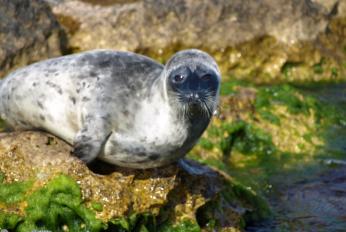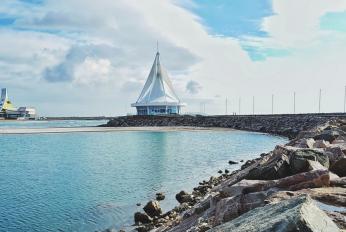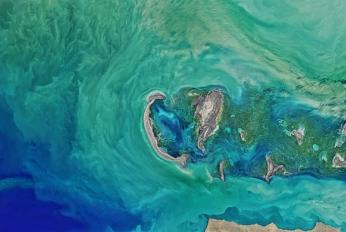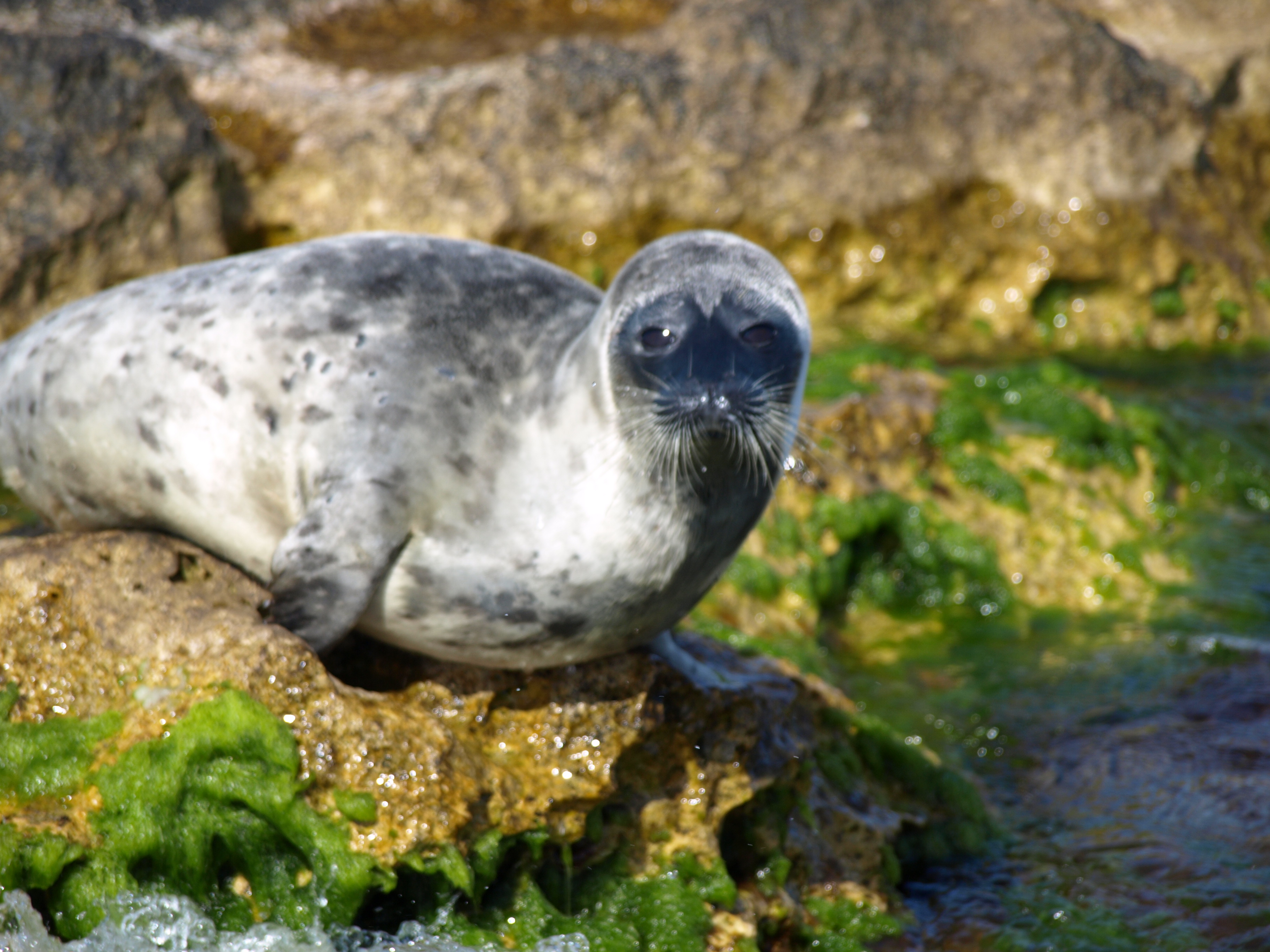Документы
В этом разделе представлены общедоступные документы и файлы, загруженные заинтересованными сторонами и хранителями окружающей среды Каспийского моря.
 Monitoring of the Caspian Seal in Turkmenistan, January – October, 2022чт, 03/23/2023 - 08:31The Khazarskiy State Nature Reserve, the Caspian Group of the IUCN Joint SSC-WCPA Marine Mammal Protected Areas Task Force, Turkmenbashi, Turkmenistan; e-mail address: mammedowmerdan514@gmail.com
Monitoring of the Caspian Seal in Turkmenistan, January – October, 2022чт, 03/23/2023 - 08:31The Khazarskiy State Nature Reserve, the Caspian Group of the IUCN Joint SSC-WCPA Marine Mammal Protected Areas Task Force, Turkmenbashi, Turkmenistan; e-mail address: mammedowmerdan514@gmail.com
- Описание
The Khazarskiy State Nature Reserve, the Caspian Group of the IUCN Joint SSC-WCPA Marine Mammal Protected Areas Task Force, Turkmenbashi, Turkmenistan; e-mail address: mammedowmerdan514@gmail.com
- Attached documents
- Metadata
- Год
- 2022
 Биологическое разнообразиевт, 07/24/2018 - 15:15ОЦЕНКА НАЦИОНАЛЬНОГО ПОТЕНЦИАЛА КАЗАХСТАНА ДЛЯ ВЫПОЛНЕНИЯ МЕЖДУНАРОДНЫХ ЭКОЛОГИЧЕСКИХ КОНВЕНЦИЙ
Биологическое разнообразиевт, 07/24/2018 - 15:15ОЦЕНКА НАЦИОНАЛЬНОГО ПОТЕНЦИАЛА КАЗАХСТАНА ДЛЯ ВЫПОЛНЕНИЯ МЕЖДУНАРОДНЫХ ЭКОЛОГИЧЕСКИХ КОНВЕНЦИЙ- Описание
ОЦЕНКА НАЦИОНАЛЬНОГО ПОТЕНЦИАЛА КАЗАХСТАНА ДЛЯ ВЫПОЛНЕНИЯ МЕЖДУНАРОДНЫХ ЭКОЛОГИЧЕСКИХ КОНВЕНЦИЙ
- Attached documents
- Metadata
- Год
- 2005
 Современное состояние популяции севрюги Acipenser Stellatus (Pallas, 1776) реки Уралвт, 07/24/2018 - 15:08Вестник АГТУ
Современное состояние популяции севрюги Acipenser Stellatus (Pallas, 1776) реки Уралвт, 07/24/2018 - 15:08Вестник АГТУ- Описание
Вестник АГТУ
- Attached documents
- Metadata
- Год
- 2016
 Отчет по показателям по биоразнообразию Казахстанавт, 07/24/2018 - 14:50Отчет по показателям по биоразнообразию Казахстана
Отчет по показателям по биоразнообразию Казахстанавт, 07/24/2018 - 14:50Отчет по показателям по биоразнообразию Казахстана- Описание
Отчет по показателям по биоразнообразию Казахстана
- Attached documents
- Metadata
- Год
- 2014
 Turkmenistan Red Data Book Plants and Funghiср, 07/11/2018 - 09:19The Red Data Book of Turkmenistan Volume 1: Plants and Fungi Ed. 3rd, Revised and updated — Ashgabat: Turkmenistan, 2011. — 288 pp. The Book contains data on 115 species of plants, described in the articles with the reference to the status, category, importance for the gene pool preservation, brief description, distributio
Turkmenistan Red Data Book Plants and Funghiср, 07/11/2018 - 09:19The Red Data Book of Turkmenistan Volume 1: Plants and Fungi Ed. 3rd, Revised and updated — Ashgabat: Turkmenistan, 2011. — 288 pp. The Book contains data on 115 species of plants, described in the articles with the reference to the status, category, importance for the gene pool preservation, brief description, distributio
- Описание
The Red Data Book of Turkmenistan
Volume 1: Plants and Fungi Ed. 3rd, Revised and updated — Ashgabat: Turkmenistan, 2011. — 288 pp.
The Book contains data on 115 species of plants, described in the articles with the reference to the status, category, importance for the gene pool preservation, brief description, distribution, habitat, number, biological peculiarities, limiting factors, information on the introduction in cultivation, applied and proposed conservation actions, as well research proposals.
The contents of the book includes 3 species of Fungi (Eumycota), 5 species of Lichens, 2 species of Bryophyta, 8 species of Polypodiophyta, 97 species of Magnolyophyta (Anglosperms). Each article is supported by a picture and a graphic map of the species distribution in Turkmenistan. The Book is intended for nature protection services, specialists in the field of botany and ecology, teachers and students of higher educational institutions and secondary schools as well as the broad range of readers interested in the country’s flora.
- Attached documents
- Metadata
- Год
- 2018
 Caspian Environment Programme - Caspian Seal Conservation and Action Plan (2007)вт, 06/12/2018 - 11:45The seal is the only marine mammal in the Caspian Sea, feeding on tulkas and other small fish, and preyed upon by land animals. It is an endemic species for the Caspian Sea and is vulnerable on that point of view. During its life history the Caspian seal migrates from the frozen North Caspian waters in the winter to the Sout
Caspian Environment Programme - Caspian Seal Conservation and Action Plan (2007)вт, 06/12/2018 - 11:45The seal is the only marine mammal in the Caspian Sea, feeding on tulkas and other small fish, and preyed upon by land animals. It is an endemic species for the Caspian Sea and is vulnerable on that point of view. During its life history the Caspian seal migrates from the frozen North Caspian waters in the winter to the Sout
- Описание
The seal is the only marine mammal in the Caspian Sea, feeding on tulkas and other small fish, and preyed upon by land animals. It is an endemic species for the Caspian Sea and is vulnerable on that point of view. During its life history the Caspian seal migrates from the frozen North Caspian waters in the winter to the South Caspian in the summer timer and back to the North to give birth to the pups on the ice. During these migration time the seals can be found everywhere in the sea.
Active conservation efforts will be required to assure the Caspian seal does not eliminate from the Earth. As a major mammal, anchoring one end of the food web, it also plays an important role in the biodiversity of the Caspian Sea and is a remarkable indicator of the Caspian ecosystems health.
- Attached documents
- Metadata
- Год
- 2007
 Final Report: Caspian Sea POPs Workshop (2010)пт, 04/20/2018 - 15:05The Tauw Consortium (TC) formed by Tauw bv - the Netherlands, Milieukontakt International (MKI) - the Netherlands, International HCH and Pesticides Association (IHPA) - Denmark and COWI A/S - Denmark, was selected by the World Bank in October 2009 to execute a Caspian regional POPs workshop in Azerbaijan. TC forms a strong O
Final Report: Caspian Sea POPs Workshop (2010)пт, 04/20/2018 - 15:05The Tauw Consortium (TC) formed by Tauw bv - the Netherlands, Milieukontakt International (MKI) - the Netherlands, International HCH and Pesticides Association (IHPA) - Denmark and COWI A/S - Denmark, was selected by the World Bank in October 2009 to execute a Caspian regional POPs workshop in Azerbaijan. TC forms a strong O- Описание
The Tauw Consortium (TC) formed by Tauw bv - the Netherlands, Milieukontakt International (MKI) - the Netherlands, International HCH and Pesticides Association (IHPA) - Denmark and COWI A/S - Denmark, was selected by the World Bank in October 2009 to execute a Caspian regional POPs workshop in Azerbaijan. TC forms a strong OP, POP and hazardous chemicals team that has cooperated in different combinations in many projects in Central Asia and the Caucasus. Local partner was Mr. Islam Muslim Mustafayev the director of the Azerbaijan branch of the Caucasus Environmental NGO Network.
The workshop aiming at the improvement of obsolete pesticides management was held at the World Bank Office in Baku, from 7 till 11 December 2009 with participants from the five Caspian littoral states and donor organizations (World Bank, FAO). The workshop comprised sessions on: - An update on implementation of international requirements related to obsolete/ POPs pesticides - Development and strengthening of legal and institutional framework - Public awareness raising - Technical problems and priorities The workshop was held as an interactive workshop in which participants presented the current state of the abovementioned aspects of pesticide management for their country. Difficulties and gaps were discussed and ideas were developed in order to bridge the gaps identified. A legal gap analysis showed that in all countries there are gaps in legislation concerning the pesticides cycle. POPs often are not included and legislation needs to be aligned with international requirements. There is a lack of coordination between institutions and stakeholders in most countries. In many countries environmental and human health problems related to obsolete pesticide stocks are aggravated by a lack of awareness. Russia and Azerbaijan presented their experiences with inventory and technical difficulties. The presentations showed that there are problems with planning and coordination, a lack of environmentally sound storage capacity, a lack of knowledge concerning the scale of the problem (reliable and complete national inventory) and a lack of knowledge concerning handling of liquid pesticides. Action plans were presented, which for some countries like Russia, were plans of different options (signing the convention, detailed inventory, pilot on implementation PSMS). Also for Turkmenistan, ratification of the Stockholm Convention is a big challenge. For other countries like Azerbaijan, there is a follow up project about to start. Therefore the action plan for Azerbaijan comprises a number of defined steps already (capacity building, full national inventory). Iran presented an action plan for repackaging of obsolete pesticides in the Golestan province.
- Attached documents
- Metadata
- Год
- 2010
Документ

Monitoring of the Caspian Seal in Turkmenistan, January – October, 2022
Документ
Биологическое разнообразие
Документ
Современное состояние популяции севрюги Acipenser Stellatus (Pallas, 1776) реки Урал
Документ
Отчет по показателям по биоразнообразию Казахстана
Документ

Turkmenistan Red Data Book Plants and Funghi
Документ

